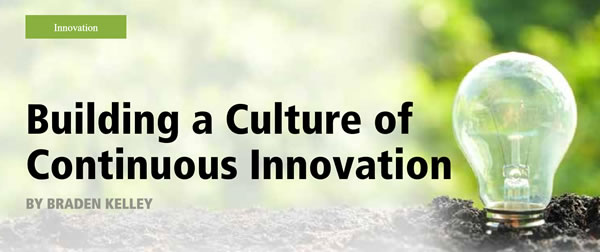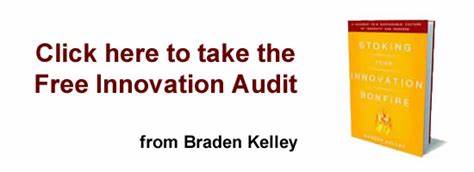From Ideation to Implementation

GUEST POST from Chateau G Pato
In today’s rapidly evolving business landscape, innovation has become a crucial element for success and competitive advantage. However, translating an idea into a tangible innovation requires a systematic approach. This article explores the key steps in the innovation process, showcasing case studies that illuminate the journey from ideation to implementation. We will also consider but not copy Braden Kelley’s Eight I’s of Infinite Innovation framework to provide a comprehensive understanding of the process, but the eight steps below are different than Mr. Kelley’s popular and powerful framework. Here is my unique take, which just by coincidence also has eight components starting with the letter I:
1. Inspire:
A crucial starting point for successful innovation is inspiration – igniting the creative spark within individuals and teams. Leaders must foster a culture that encourages out-of-the-box thinking. One outstanding example is Apple’s innovation journey with the introduction of the iPhone. Inspired by Steve Jobs’ vision of a revolutionary device, Apple’s team pushed the boundaries of mobile technology, ultimately transforming not only the company but the entire industry.
2. Identify:
Identifying key opportunities and challenges is the next step in the innovation process. This involves understanding customer needs, market trends, and potential gaps to leverage. Netflix serves as an exemplary case study here. Recognizing the limitations of the traditional DVD rental model, Netflix identified the emerging trend of digital media consumption. The company pivoted from DVDs to a streaming platform, disrupting the entire entertainment industry.
3. Imagine:
This step focuses on ideation, allowing various possibilities and solutions to flourish. Organizations should create environments that encourage brainstorming sessions, collaborative thinking, and idea sharing. Google’s “20% time” policy exemplifies this approach. Employees are encouraged to dedicate 20% of their working time to pursuing their innovative ideas. This practice has led to several breakthrough projects, including Gmail and Google News.
4. Innovate:
Innovation is driven by turning ideas into prototypes or minimum viable products (MVPs). Iterative testing and refining are vital in this phase. Tesla, the electric vehicle manufacturer, exemplifies this stage perfectly. Tesla’s successful implementation of electric cars was accompanied by rigorous testing and continuous improvement cycles. Their innovative approach not only transformed the automotive industry but also challenged the status quo.
5. Invest:
To bring an innovation to fruition, adequate investment is required. This includes securing financial resources, allocating necessary budgets, and acquiring the right talent and technologies. One standout case study in this regard is SpaceX. Founder Elon Musk successfully secured substantial funding from various sources, enabling the development and realization of ambitious innovations in space exploration and transportation.
6. Implement:
Implementation involves translating innovative ideas into practical solutions. Planning, organizing, and executing are critical elements during this stage. Case in point, Amazon’s implementation of its Prime membership service revolutionized e-commerce. The company seamlessly executed its vision to provide faster shipments, exclusive deals, and unparalleled customer experience, resulting in a substantial increase in customer loyalty and market share.
7. Improve:
Innovation is a continuous process, demanding ongoing enhancements and evolution. Organizations must prioritize capturing feedback, analyzing data, and making iterative improvements. McDonald’s serves as an example here, as the fast-food giant constantly adapts its menu offerings to cater to changing customer preferences and dietary trends. This commitment to improvement has allowed McDonald’s to stay relevant for decades.
8. Influence:
The final step revolves around influencing the market, customers, and stakeholders. Organizations must effectively communicate the value and benefits of their innovations to gain acceptance and support. Apple’s launch of the iPod not only introduced a revolutionary music player but also influenced customers to transition from CDs to digital music. Apple’s marketing efforts ensured that the world embraced this paradigm shift.
Conclusion
The journey from ideation to implementation is a multifaceted process that demands careful navigation. By incorporating this set of steps in your innovation approach or by leveraging Braden Kelley’s popular Eight I’s of Infinite Innovation (CLICK TO COMPARE), organizations will gain a comprehensive framework to guide their innovation endeavors. The case studies of Apple, Netflix, Google, Tesla, SpaceX, Amazon, McDonald’s, and Apple highlight the different stages of the process, showcasing the significance of each step in driving successful innovation. Embracing these key steps empowers organizations to transform ideas into real-world innovations, paving the way for future growth and success.
SPECIAL BONUS: Futurology is not fortune telling. Futurists use a scientific approach to create their deliverables, but a methodology and tools like those in FutureHacking™ can empower anyone to engage in futurology themselves.
Image credit: Pexels
![]() Sign up here to get Human-Centered Change & Innovation Weekly delivered to your inbox every week.
Sign up here to get Human-Centered Change & Innovation Weekly delivered to your inbox every week.

